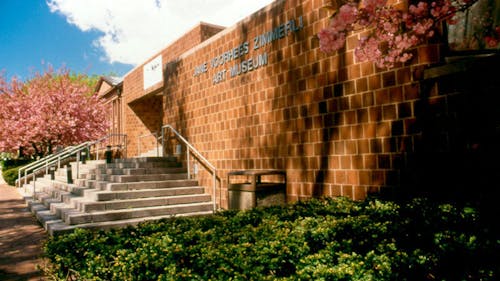Brodsky Center exhibition is perfect addition to Rutgers' Zimmerli experience

I recently went to the Zimmerli Art Museum on the College Avenue campus after hearing about its new exhibition, "The Brodsky Center at Rutgers University: Three Decades, 1986–2017." Upon my visit, I realized just how much this building contributes to Rutgers and its students — its culture, milestones, history and unique perspectives.
The exhibition is a celebration of the world of print and paper making, specifically focusing on the Brodsky Center, a studio founded by artist Judith K. Brodsky, a distinguished professor emerita in the Department of Visual Arts at the Mason Gross School of the Arts. It spans three decades and represents the values that Brodsky stood for as an advocate for diversity, social justice and self-expression in its truest form.
We see variations of interpretations of what it means to be an American and can imagine how collaborating artists must have come together to create such nuanced meanings in a tangible format. Brodsky specifically wanted the center to create space for women and artists of color.
One of my favorite parts of the exhibit was the "Inside and Outside" section, where Brodsky stated that she took photos of her assistant as well as herself, specifically her open mouth, to combine it into a piece that symbolized the inevitability of mortality.
I wasn't sure what to expect when I read this, but I turned around and saw large, life-sized canvases of an open mouth screaming. With different colors, textures and stages of life shown, it perfectly captured the essence of the human body and how complex we all are.
Ferris Olin, a distinguished professor emerita at Rutgers and the organizer of the exhibit, didn't include wall text alongside the individual pieces. This allows the visitor to connect with the art in their own way and engage with it instead of reading the text and not giving the artwork itself as much thought.
As someone who's used to reading the wall text that accompanies museum selections and actually prefers it, this challenged me to interact with all of the pieces in a new way, creating an experience that I didn't envision for myself prior.
It made me think about how I feel when I look at something and what it symbolizes to me — not just what I'm told to feel by something or someone else.
The Zimmerli offers a wide range of work that spans many periods of time. As a current third-year student at Rutgers, it's definitely one of the institutions that I'll miss the most once I graduate.
You can go to the Zimmerli with your friends and make a plan to go to specific exhibits, as it has a few other exhibits besides the temporary Brodsky Center. You can also stop by on your way back from class, as it's a nice way to clear your mind from busy student life.
Either way, you'll still get a meaningful experience that's worth revisiting every time.



